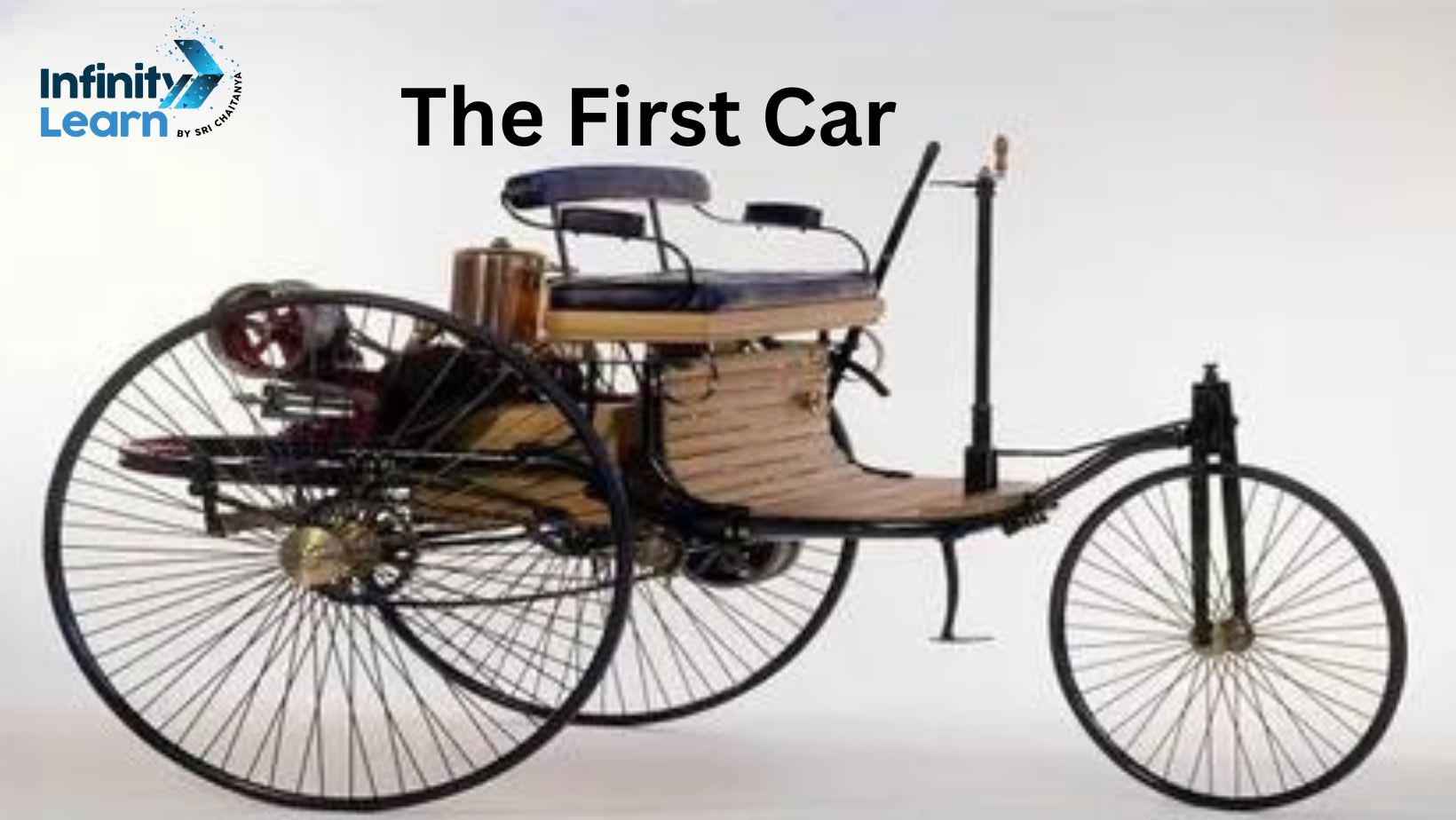Table of Contents
Kids are fascinated by cars and their speed, whether they’re playing with toy cars or going for a ride. It’s crucial to balance their curiosity with insights about car safety. Children are often curious about car designs and features and are eager to learn more.
In this blog, we share interesting facts about cars tailored for kids. If your kid is familiar with most car models and enjoys playing with toy cars, these facts will undoubtedly satisfy their curiosity and build a foundational understanding of the fascinating world of cars.
Let’s explore the origins of cars, how they work, and interesting facts about cars.
Also Check: Science About Nitrogen
History of the Car
Many people think Henry Ford from the U.S. made the first car, but evidence suggests that back in the 15th century, Leonardo da Vinci was already doodling designs for cars. Da Vinci’s early sketches used windmills to power vehicles instead of regular fuel.
The real deal on modern cars, however, comes from Germany and France. These early cars ran on all sorts of fuels like steam and coal, more like trains than the petrol-powered cars we have today. Gasoline cars won out because they could go the farthest, and that’s why we still use gasoline today.
Also check: Mercury Element

Okay, so Henry Ford didn’t exactly invent the car, but in the 1920s, he cracked the code for making lots of cars quickly and cheaply. This allowed regular Americans to get their hands on their very own cars. Thanks to Ford, the first affordable American car, the Model-T Ford, hit the scene in October 1908, selling for $850.
Initially, only rich families could afford cars, but changes were made, making cars more affordable for everyone. This invention changed lives, giving people the freedom to travel anywhere – from town to rural homes, visiting family, and going on trips – all without depending on trains and buses. Cars brought a new kind of freedom to Americans.
Also Check: Stegosaurus
The First Car
The very first car ran on steam power and was created by a French inventor named Nicolas Joseph Cugnot in 1769. Even though many think Karl Benz invented cars, he actually made the first car that was successful in the market. Nicolas invented the first car, but Karl Benz made the first car that people could buy. That’s why many know Benz as the inventor, even though the British Royal Automobile Club recognizes Nicolas as the original inventor.

How Cars Function
- Cars are made up of a few key parts, such as the outer shell and the engine.
- The outer part of the car, which keeps passengers safe and the engine protected, is typically constructed from sturdy materials like steel, tough plastics, and fibreglass.
- All of this is linked to something called the chassis, where you find the wheels that enable the car to move along the road.
- After that, everything that ensures our safety and comfort is added on. Think steering wheel, brakes, and seat belts – these are crucial.
- The engines in today’s cars usually work through a process known as internal combustion. In simple terms, there are lots of small explosions happening inside the engine.
- These tiny explosions kickstart the engine’s ability to generate energy, driving the car and you to your destination.
- Modern cars come with extra perks like radios, video players, and air conditioning. Most also have convenient features like cup holders, automatic windows, and seats that can recline.
- This great advancement comes from the Model-T, which was considered amazing simply because it had a horn.
Also Check: How Do Plants Grow
Car Safety
Riding in a car can be convenient and enjoyable! However, it’s crucial to prioritize safety. Believe it or not, the earliest cars didn’t have seat belts, and some didn’t even have windshields!
The horn was one of the first safety features added to cars. It helped alert pedestrians and other drivers about potential dangers. As more cars hit the road, car manufacturers have been working extra hard to make them safer. They focus on things like better seat belts, airbags, safety monitors, and improved materials.
Even with all these safety features, it’s still super important to do your part and always wear your seat belt.
Traffic & Laws
Back when there weren’t many cars, there wasn’t much traffic, which meant fewer accidents. But as cars became more popular, people realized the need for traffic laws. The first speed limits were set in Connecticut in 1901. And guess what? The first stoplight with green, yellow, and red lights was installed in the 1930s.
Thanks to these measures, roads gradually became safer. Nowadays, you can’t hit the road without following a bunch of rules to keep everything safe.
For most teenagers, getting a driver’s license is a big milestone. However, it wasn’t until 1959 that all states made it a requirement to have a driver’s license to operate a vehicle.
Interesting Facts About Cars
- There are over 10 billion cars in the world, which is more than the 7.4 billion people estimated by the World Population Clock. Many cars are made each year, and not all of them are actively used.
- Cars are the most recycled product globally, with approximately 95% of non-functioning cars being recycled. Every year, around 27 million cars undergo the recycling process.
- A typical car consists of nearly 30,000 parts. When these pieces are assembled correctly, they create the cars we drive. Many of these components, such as batteries, oil filters, scrap metals, and tires, are recyclable.
- The longest-living car, the Piccadilly-P1 Roadster by Rolls-Royce, was cherished for an incredible 82 years by its owner, Allen Swift, who received it as a graduation gift.
- The longest traffic jam ever recorded happened on February 16, 1980, stretching 109 miles from Lyon to Paris. Poor weather and traffic congestion caused this monumental standstill.
- The inaugural car accident occurred in 1891 near Cleveland, Ohio City, involving James William Lambert’s car hitting a tree root and crashing into a hitching post.
- Volkswagen owns various prestigious car companies, including Audi, Porsche, Bugatti, Bentley, Lamborghini, SEAT, and Skoda.
- Autonomous vehicles, or self-driven cars, are anticipated to be commercially available by 2020, potentially reducing the number of cars needed for commuting and decreasing accidents.
- Autonomous cars will require a driver’s license to operate on open roads. Nevada was the first state in the US to authorize these vehicles.
- In 1908, the cost of a car, like the Ford Model T, was around $825, equivalent to thousands of dollars in today’s currency.
- About 75% of Rolls-Royce cars produced are still on the road.
- The “New Car Smell” is made up of volatile compounds and can be harmful if inhaled for a long time.
- Benz was the first car company offered for sale in 1887.
- The earliest cars had a maximum speed of 4 km per hour.
- The first speeding ticket was issued in 1904.
- Over 150,000 drivers put the wrong fuel in their cars each year.
- Driving at 90 km/h, it would take six months to reach the moon.
- The most expensive car ever made was a 1931 Bugatti Royale Kellner Coupe, costing $8.7 million.
- Hitler requested a car loan from Mercedes-Benz while in jail.
- Electric cars are seen as the future, aiming to combat global warming and climate change. The first electric car was invented way back in 1828. The car’s power comes from a battery.
- In the late 1800s, Wisconsin offered a $10,000 reward to the person who could find an alternative to using horses and animals for transportation.
- Car racing started attracting big crowds in the United States around 1910. By 1969, it was even more popular than football and basketball.
- The V8 engine is considered the best for racing. Small cars, known as compact cars, were first introduced in the late 1950s by Volkswagen.
- The Ford Mustang was the first sports car available to buyers.
- SUVs became trendy in the 1990s, inspired by the World War II Jeep.
- Detroit, Michigan is known as America’s Motor City.
- On average, Americans spend about 38 hours a year stuck in traffic.
Car FAQs
How did the term car come about?
The word car is thought to have its roots in the Latin term carrus, meaning a wheeled vehicle. This Latin word itself has Celtic origins, traced back to the Gaulish term karros, which translates to chariot.
Where was the first car created?
The initial automobile was crafted in Mannheim, Germany, back in 1886 by Karl Benz. He gave his invention the name Patent Motorwagen.
What advantages come with teaching kids facts about cars?
Teaching children about cars exposes them to different aspects of vehicles. Understanding how cars function can stimulate critical thinking and problem-solving skills in kids. Moreover, it can aid in comprehending cause-and-effect connections. Delving into the world of cars can spark a child's curiosity and interest in engineering and technology.









